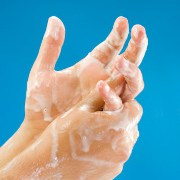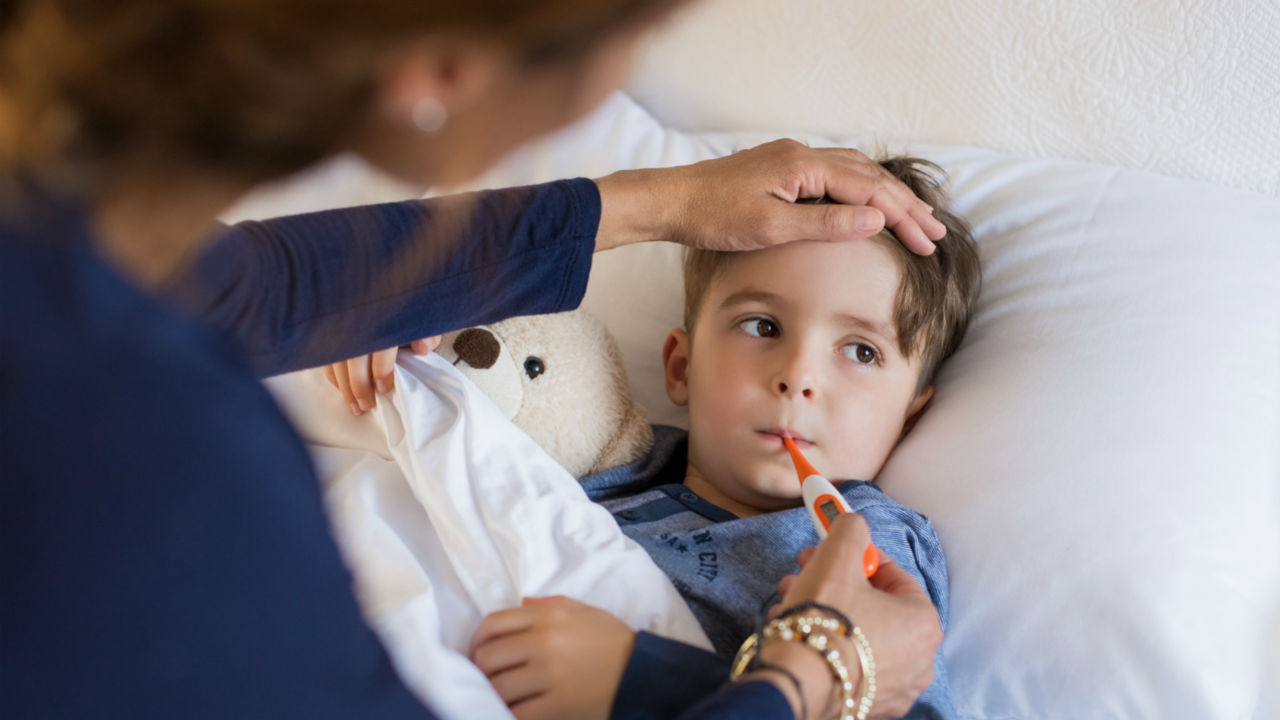 Photo: Getty Images
Photo: Getty Images
In 2009 when world governments announced a new strain of influenza called H1N1, initially dubbed "swine flu", I listened with a certain degree of skepticism to the daily radio reports on the subject. There were dire estimations of how many people were going to die from the new flu and scary newspaper stories publishing the details of plans for mass graves.
At the same time, numerous commercials appeared, advertising remedies for the swine flu and well-known companies selling household cleaning items suddenly announced their products killed H1N1 in tests. Posters for anti-bacterial hand sanitizers sprang up everywhere.
I couldn’t help thinking how this situation stood to benefit such companies, who could make a tidy profit out of public fear. It made me angry, thinking of all the people who would be rushing out to buy kitchen bleach and anti-microbial wipes.
I found good old-fashioned white vinegar perfectly good enough for most cleaning jobs. I cleaned my kitchen surfaces with washing up liquid and washed my children’s hands with normal soap--just a plain ordinary bar of soap. I never fell for the glitzy marketing ploys showing dangerous invisible germs all over our homes, ready to make us ill.
Yes, there are bacteria everywhere, but not only are they all over surfaces, they are also all over us and they live inside us. There are literally thousands of bacteria in our bodies and on the surface of our skin. According to a recent news report, there are 1,400 strains of bacteria in the human belly button, some of which are undiscovered to science. We are living ecosystems and we need these bacteria to live. They not only eat up the bad bacteria but they provide our immune system with the needed challenges in order to stay healthy and functioning correctly.
To then become fixated and worried about a select bacteria seems odd and to attempt to destroy "99.9%" of bacteria, as some adverts claim, may be doing us more harm than good.
D.P. Strachan said, “Over the past century …higher standards of personal cleanliness have reduced the opportunity for cross infection in young families. This may have resulted in more widespread clinical expression of atopic [allergic ‘hyper-sensitivity’] disease…”
A U.S. government report summarizing studies on the subject of germs and illness mentioned the fact that children who live on farms have fewer allergies and that being exposed to microbes lowers the risk of asthma. They also wrote that women have more allergies than men because there is a greater focus on cleanliness for girls.
Women are also more likely to use household cleaning products and anti-microbial products, compared with men. Could this be a reason for the increase in allergies?
Anti-bacterial soaps contain a substance called triclosan which is structurally similar to BPA and dioxins, both of which can be devastating to human health.
It is also a hormone disruptor and has been found to affect hormone directed development in bullfrogs. It is also an immune system disruptor, interfering with the normal function of the immune system--the complete opposite of what anti-bacterial wipes are supposed to do. A study in Environmental Health Perspectives found that those exposed to triclosan had a greater chance of being diagnosed with allergies and hay fever. As allergies result from an improper immune response to something harmless, doctors and scientists use it as an indication of immune dysfunction.
It is not known what concentration of triclosan is safe for humans, if any concentration at all.
Due to its widespread use in multiple products including hand soaps, facial tissues, laundry liquid and medical wipes since the 1960’s, it is widely in the environment and has been discharged into the water supply via sewage plants.
80 percent of streams tested had been contaminated with at least one contaminant and triclosan was the most commonly detected one. It has also been found in landfill sites and detected in human body fat, blood samples and even in breast milk where it can be passed to babies who all have under-developed immune systems.
Triclosan was also found in 75 percent of a Centers for Disease Control and Prevention study population‘s urine.
No one knows what effect this has or will have on human health.
As far back as 1974, the U.S. Food and Drug Administration said there was insufficient proof of the safety of triclosan or proof that it was effective at killing bacteria, yet anti-bacterial hand wash and other products containing it are still being sold decades later.
Studies have shown that just like with antibiotics, bacteria are evolving to become resistant to anti-bacterial soap, making them stronger and more harmful. A conclusion of the data in Clinical Infectious Diseases found that "The lack of an additional health benefit associated with the use of triclosan-containing consumer soaps over regular soap, coupled with laboratory data demonstrating a potential risk of selecting for drug resistance, warrants further evaluation by governmental regulators regarding antibacterial product claims and advertising."
They found that plain soap was effective at reducing illness, without the risks associated with anti-bacterial washes, and if it’s flu you’re worried about, this can be prevented by sunshine. One of the reasons we are thought to have more flu in the winter months is because there is less exposure to sunlight during these months, and therefore less vitamin D absorption.
A study in the American Journal of Clinical Nutrition found that school children who were supplemented with vitamin D have less flu, so I supplement myself and my children with vitamin D during the colder months.
Probiotics have also been found to reduce flu like illness and missed days of school, as the journal of Pediatrics found: "Daily dietary probiotic supplementation for 6 months was a safe effective way to reduce fever, rhinorrhea, and cough incidence and duration and antibiotic prescription incidence, as well as the number of missed school days attributable to illness, for children 3 to 5 years of age."
I also give my children regular probiotic drinks to encourage the healthy growth of bacteria, rather than worrying about harmful ones.
To summarize:
• Anti-bacterial soaps contain triclosan which is like BPA and is a hormone disruptor.
• There is no known safe level of triclosan.
• There is insufficient evidence that anti-bacterial soaps are safe or effective.
• Resistant bacteria are developing in response to anti-bacterial soap.
• Triclosan has been implicated as an immune system deregulator and there is a higher incidence of allergies and hay fever in children who use products with triclosan in them.
• Ordinary soap is effective at preventing illness such as gastroenteritis and flu.
• Exposure to sunshine and supplementation with vitamin D can reduce the risk of flu.
• Probiotics can reduce the risk of flu and other illnesses.
Sources:
http://www.michigan.gov/documents/mdch/1_-_ReesClayton_-_Keynote_353264_7.pdf
Consumer Antibacterial Soaps: Effective or Just Risky?, Clin Infect Dis. (2007) 45 (Supplement 2): S137-S147 - http://cid.oxfordjournals.org/content/45/Supplement_2/S137.full
The impact of bisphenol A and triclosan on immune parameters in the U.S. population, NHANES 2003-2006, Environ Health Perspect. 2011 Mar;119(3):390-6. Epub 2010 Nov 9 - http://www.ncbi.nlm.nih.gov/pubmed/21062687
TRICLOSAN
http://www.health-report.co.uk/triclosan.html
Randomized trial of vitamin D supplementation to prevent seasonal influenza A in schoolchildren, Am J Clin Nutr May 2010 - http://www.ajcn.org/content/early/2010/03/10/ajcn.2009.29094.abstract
Probiotic Effects on Cold and Influenza-Like Symptom Incidence and Duration in Children, Pediatrics Vol. 124 No. 2 August 1, 2009 - http://pediatrics.aappublications.org/content/124/2/e172.abstract
Navel-gazing scientists discover the human belly button harbours 1,400 strains of bacteria, Daily Mail, 8th July 2011 - http://www.dailymail.co.uk/sciencetech/article-2012613/Navel-gazing-scientists-discover-human-belly-button-harbours-1-400-strains-bacteria.html
Belly Button Biodiversity - http://www.wildlifeofyourbody.org/?page_id=246
Reviewed July 11, 2011
by Michele Blacksberg R.N.
Edited by Alison Stanton
Joanna is a freelance health writer for The Mother magazine and Suite 101 with a column on infertility, http://infertility.suite101.com/. She is author of the book, 'Breast Milk: A Natural Immunisation,' and co-author of an educational resource on disabled parenting, in addition to running a charity for people damaged by vaccines or medical mistakes.






Add a CommentComments
There are no comments yet. Be the first one and get the conversation started!